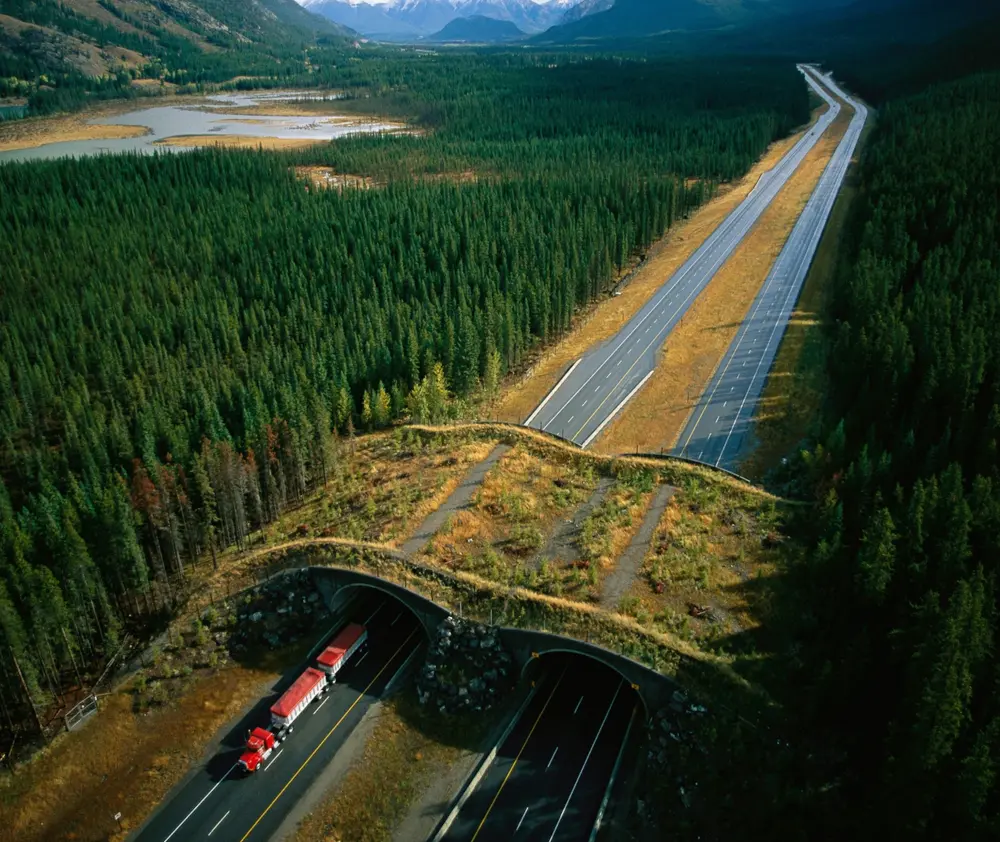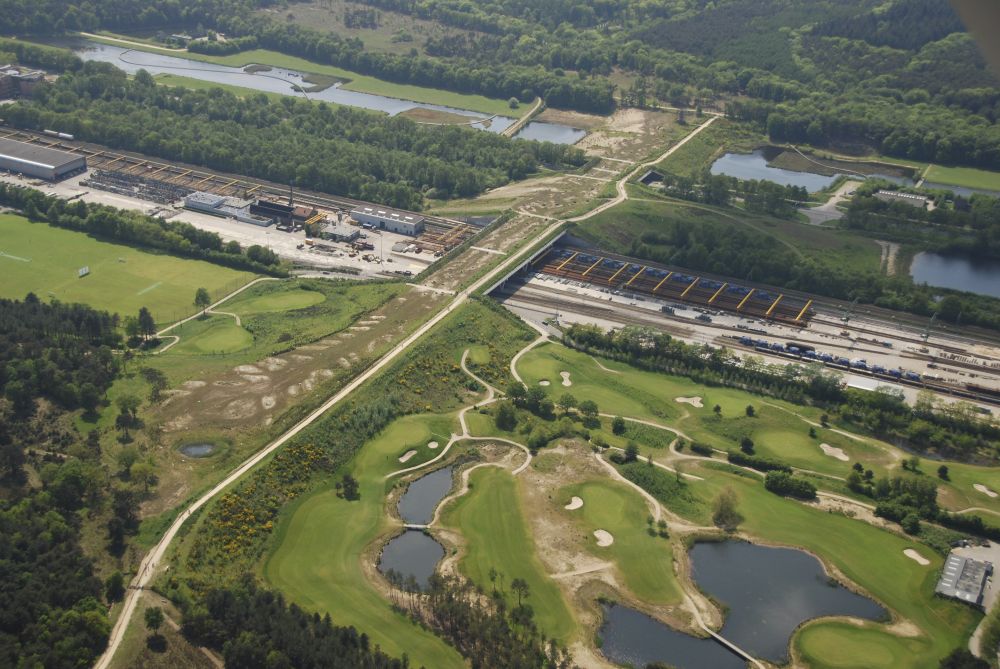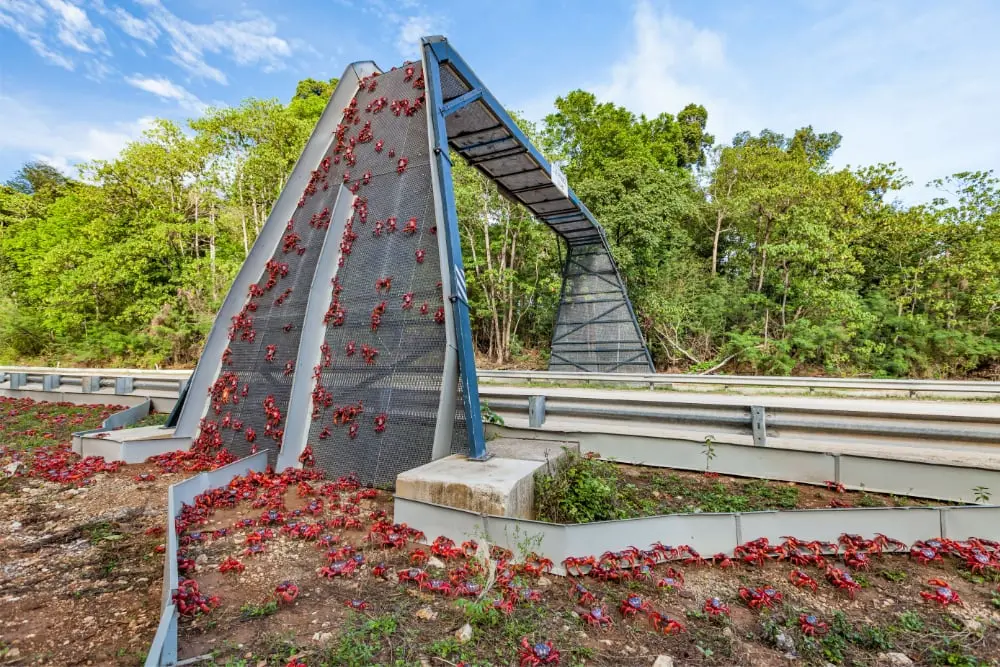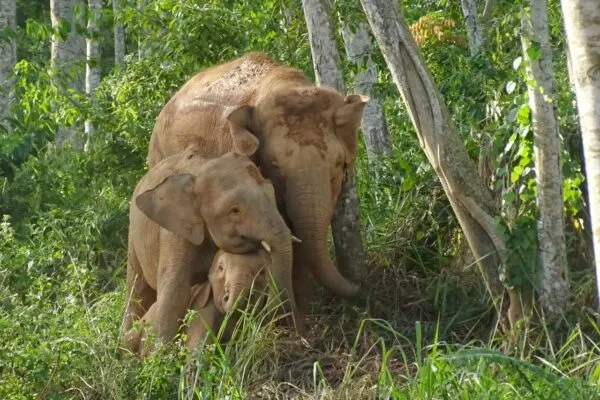What are Ecological Corridors and Their Significance?
In modern times ecological corridors have become rather significant to provide a safe passage to animals without human intrusion
Human settlements, progressive projects such as major highways and infrastructural development, and expanding farmlands – especially around forests, have resulted in widespread habitat fragmentation and isolation. Although the ecological corridors have always helped the animals to move back and forth from one place to another, the human intrusion has obstructed the movement of the species.
The highways cutting through the crucial corridors lead to unwanted human-animal encounters, which creates trouble for both. More often than not, wild animals get hit by speeding vehicles and lose their lives. The constant interruptions in wild habitats often lead to human-wildlife conflicts, risking the lives of both parties.
The wildlife corridors play a role of utmost importance in the preservation and growth of species. Not only do the animal migration corridors on land need protection but it is also necessary to protect the oceanic corridors and corridors in the air for bird species.
What are Ecological Corridors?
Wildlife corridors, also known as habitat corridors or ecological corridors, are wildlife areas designed to keep local, migratory animal species from the encroaching human population in regions where human-wildlife interactions are unavoidable.
Wildlife corridors are connections across landscapes that link areas of fragmented habitat. They support natural processes such as migration that occur in a healthy environment, including the movement of species to find resources, such as food and water.

The Trans-Canada Highway wildlife crossings in Banff National Park | Image: Joel Sartore/Nat Geo
A wildlife corridor is considered a possible solution in an area where the destruction of a natural area has deeply affected its native species. Moreover, natural disasters such as wildfires and floods present the animals with only two options – either to flee or die.
Wildlife corridors have become more significant in such situations by providing a safe path to the animals connecting them to a safe landscape where they can survive.
While there are several passages chosen by the species to move back and forth in the wilderness, there are various man-made corridors to allow the species a safe passage through highways or settlements.
Importance of Ecological Corridors
The main goal to establish wildlife corridors is to increase biodiversity. When wild habitats are disturbed and broken up by various human activities, animal populations dwindle and many flora and fauna species end up becoming endangered.
By re-connecting the fragmented landscapes, the population fluctuations can decrease dramatically and preserve the species. Wildlife corridors serve as significant and essential linkage areas that allow animals to move through increasingly human-dominated landscapes.
As wildlife habitats have degraded and fragmented by relentless city developments, road and railway constructions, clearing of land for agricultural purposes, with lands flooded by dams, and broken by industry links between areas, the chances of wildlife being adversely affected continue to increase.
Wildlife corridors can contribute to three major factors to stabilize an animal population in any particular region:
- Colonization – Habitat corridors enable the animals to move and occupy new areas when food sources or other natural resources are lacking in their core habitat.
- Migration – Some species need to migrate for survival, depending on various seasons. Through corridors, such species can move back and forth safely and effectively when it does not interfere with human development barriers.
- Interbreeding – Animals can find new mates in neighboring regions via wildlife corridors so that genetic diversity can increase and thus have a positive impact on the overall population.

Natuurbrug Zanderij Crailoo Ecoducts, Netherlands | Image: Willy Metz
Animal populations have been divided into smaller groupings with little contact between them, leaving them vulnerable to predators. As a way to combat the negative effects of habitat fragmentation, wildlife corridors can be an effective tool to help sustain the wildlife populace, habitats, and overall biodiversity.
Wildlife corridors used by various species to migrate, breed, and feed are increasingly becoming relevant as essential tools for species conservation. But, as habitats are shrinking due to human activities, the safe movement of natural corridors is also becoming extinct.
The attempt to traverse a habitat that’s been bisected by major roadways makes the animals vulnerable to innumerable other dangers.
Currently, more than ever – with the current rate of species extinction – it is crucial to find and implement solutions to aid the species in their conservation and the habitat they thrive in. Wildlife corridors could be the key solution to allow the coexistence of humans and wildlife.
Migration corridors are another tool that can help reconnect disconnected patches of habitat and so are essential to achieve the goal of protecting habitat in various biodiversity-rich regions for people and nature to thrive. Therefore, it is crucial to protect these movement corridors to save the species from oblivion.
Effects of Habitat Fragmentation
Fragmentation can trouble wildlife as it can separate individuals within a population and can disconnect them from essential resources.
Habitat fragmentation can lead to an overall reduction in species population, less biodiversity, and potentially local extinction of plant or animal species. Fragmentation can make a species more vulnerable to attack from its predators.

Christmas Island Crab Crossing, Australia | Image: Parks Australia
The fragmentation of the habitat affects three kinds of wildlife species the most – migratory species; species with fewer members and requirement of large home ranges, such as grizzly bears and tigers; and species that don’t do well in altered environments and have specific needs like orangutans and tiger salamanders.
Determining Factors
It is crucial to take the determining factors of wildlife corridors into account. Unless it provides a sense of utter safety to the species, the corridors would be unable to fulfill their sole purpose. Some species happily use narrow corridors, while others shy away from human presence and avoid them.
Besides, many key factors play the role of determinants in how appealing a migration corridor will be to the animals: terrain type, vegetation cover, snow depth, topography, physical barriers of various kinds, and of course, human presence.
Impacts of Wildlife Corridors
Varying in shapes and sizes, the structure of wildlife corridors primarily depends on the concerned species. They can range from hedges to fauna passages to expansive natural areas and stepping-stone habitat patches that facilitate the migration of birds and sea turtles.
Although built to connect, preserve, and offer safe migration of the species, migration corridors can also have negative impacts as well. There could be a few unintended consequences of corridor creation based on their design.
Where the fragmentation of habitats can cause defaunation, wildlife corridors could lead to the dispersal of unwanted species. The corridors can increase the spread of invasive species too. These species are excellent colonizers with inherent characteristics to spread rapidly and displace native species.
Predation rates could increase as the predators can easily hunt down the dispersing prey through the corridors. Diseases and other parasites may also use corridors to enhance dispersal and transmission.
However, the importance of ecological corridors cannot be denied. Regardless of the negative impacts, they play a vital role in the preservation and restoration of habitats and species. More corridors should be built to provide a safe traversing space for the species.


